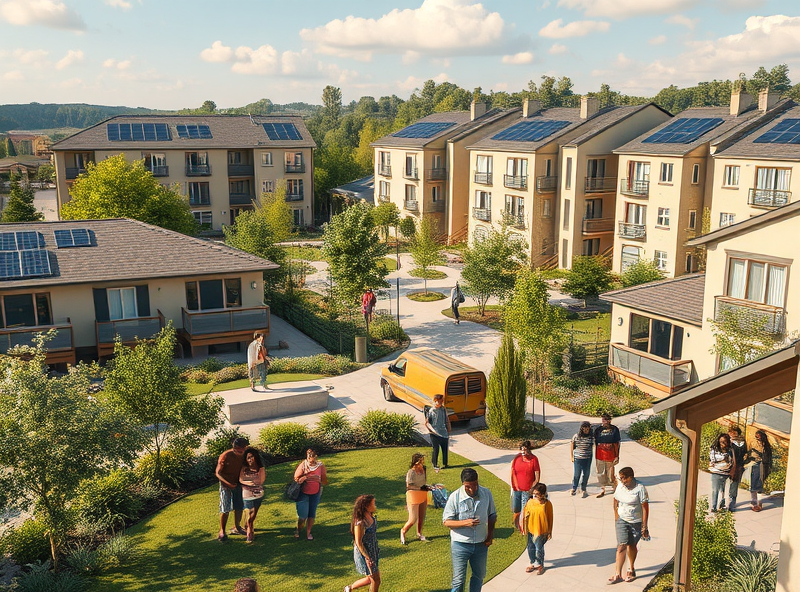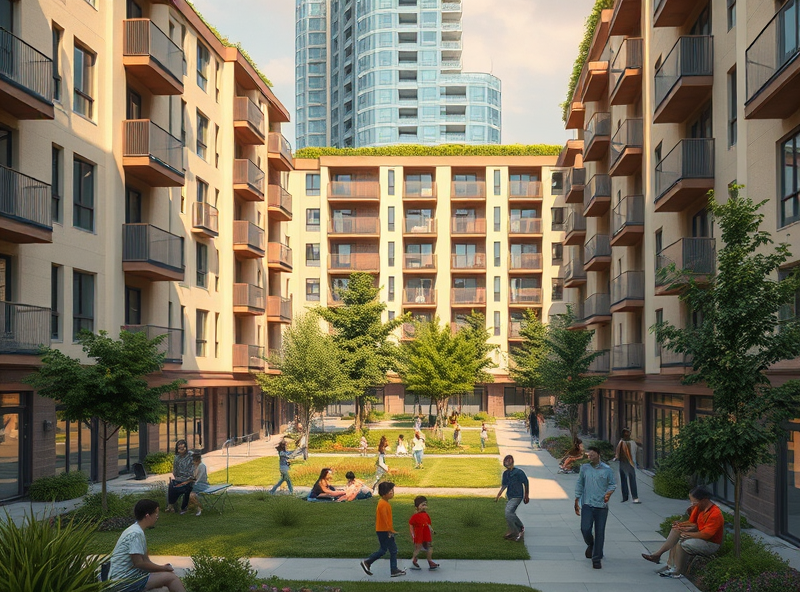Demand-Side Support Programs

Demand-side support programs are essential tools in addressing the housing challenges faced by low-income families. These programs focus on empowering individuals and families by providing financial assistance or subsidies to help them afford housing in the private market. One common example is housing vouchers, such as the Section 8 program in the United States, which allows recipients to choose housing that meets their needs while covering a portion of the rent. This approach not only provides flexibility but also promotes integration into diverse communities. Additionally, demand-side programs often include utility assistance to help families manage energy costs, ensuring that their homes remain safe and livable. By directly supporting individuals, these programs help reduce homelessness, alleviate housing insecurity, and improve overall quality of life. If you’re struggling with housing costs, researching demand-side programs in your area could be a life-changing step toward stability and security.
Supply-Side Approaches to Housing

When addressing the challenges of low-income housing, supply-side approaches play a crucial role in increasing the availability of affordable homes. These strategies focus on directly boosting the housing supply, ensuring that more units are available to meet the growing demand. One common approach is government investment in public housing projects. By funding the construction of affordable housing units, governments can directly influence the availability of low-cost homes for low-income families.
Another effective method is offering incentives to private developers. Tax credits, subsidies, or reduced regulatory barriers can encourage developers to include affordable housing units in their projects. For example, programs like the Low-Income Housing Tax Credit (LIHTC) in the United States have successfully motivated private developers to contribute to affordable housing initiatives.
Zoning reforms also play a pivotal role in supply-side solutions. By revising zoning laws to allow for higher-density housing or mixed-use developments, municipalities can create more opportunities for affordable housing construction. These reforms can reduce land costs and make it easier for developers to build affordable units.
Lastly, partnerships between governments, non-profits, and private entities can amplify the impact of supply-side approaches. Collaborative efforts can pool resources, expertise, and funding to create sustainable and inclusive housing solutions. By focusing on these strategies, communities can work towards addressing the housing crisis and ensuring that everyone has access to a safe and affordable place to live.
Key Challenges in Policy Implementation

Low-income housing support policies are essential for addressing housing insecurity and ensuring that everyone has access to safe and affordable living conditions. However, implementing these policies often comes with significant challenges. One major issue is the lack of sufficient funding. Many governments and organizations struggle to allocate enough resources to meet the growing demand for affordable housing. This can lead to delays in construction projects or insufficient support for low-income families.
Another challenge is navigating bureaucratic hurdles. Complex regulations and lengthy approval processes can slow down the implementation of housing programs. Streamlining these processes is crucial to ensure that assistance reaches those in need in a timely manner.
Additionally, there is often a gap between policy design and real-world needs. Policymakers may not fully understand the unique challenges faced by low-income communities, leading to solutions that are not practical or effective. Engaging with local communities and incorporating their input can help bridge this gap.
Lastly, there is the issue of stigma. Low-income housing projects sometimes face resistance from local residents due to misconceptions or fears about their impact on property values or neighborhood safety. Public education and community outreach are vital to overcoming these barriers and fostering inclusive communities.
By addressing these challenges head-on, we can create more effective housing support policies that truly make a difference in people’s lives.
Suggestions for Improving Housing Policies

Housing policies play a critical role in ensuring that low-income families have access to safe and affordable homes. However, there is always room for improvement to make these policies more effective and inclusive. One key suggestion is to increase funding for affordable housing projects. By allocating more resources to building and maintaining low-cost housing units, governments can directly address the shortage of affordable homes.
Another approach is to enhance collaboration between public and private sectors. Public-private partnerships can lead to innovative solutions, such as mixed-income housing developments, which not only provide affordable housing but also promote community integration. Additionally, streamlining bureaucratic processes for housing assistance programs can ensure that support reaches those in need more quickly and efficiently.
Lastly, implementing policies that focus on long-term sustainability is crucial. This includes promoting energy-efficient housing designs and providing incentives for landlords to maintain their properties. By addressing these areas, housing policies can better serve low-income families and contribute to building stronger, more equitable communities.



